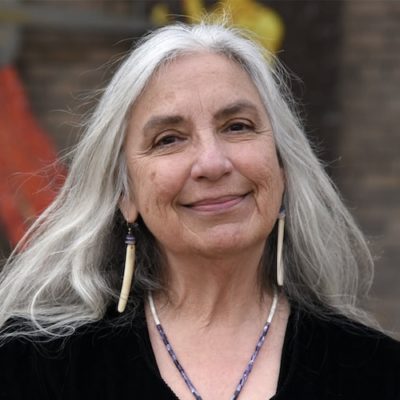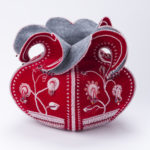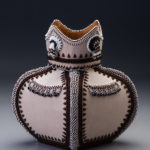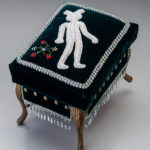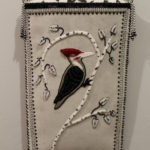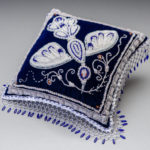Over 40 years ago now, Karenannn Hoffman left home in Oshkosh to go to college at UW-Stevens Point.
“I came to school up here and I always say the next thing I know, I turned around, I was married, had a bowling team and a mortgage and son of a seabiscuit, now I’m 64 and all those years later here I am,” she said in an interview last week.
A member of the Oneida Nation, she lived outside of town with her husband Mike, a Menominee language teacher.
Together, they were “so passionately involved in culture, native culture, and understood the responsibility to do everything we can to honor our ancestors and lay a plate for the people who haven’t been born,” she said. “We built this Indigenous life, I would say, out here in the outskirts of Stevens Point when Mike was alive. I didn’t eat meat that came from a grocery store. He hunted, he fished, he trapped, he processed, he gardened, everything.”
Mike passed away two years ago now, but she has enough of the wood he chopped to last two more winters.
“When I say he did everything,” she said, “to make sure that I was able to pursue my art, that’s an example.”
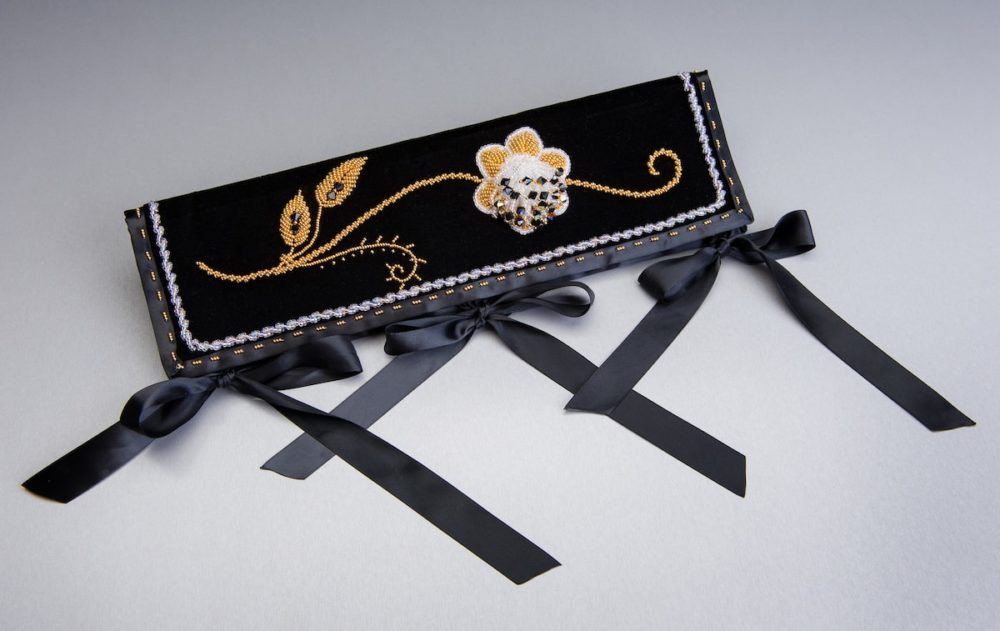
It was about 25 years ago that she first took up raised beading, an art form she learned from Samuel Thomas and his mother Lorna Hill, members of the Cayuga Nation in Niagara Falls, Ontario. Lorna Hill has passed away now, but Hoffman said Thomas will always be her teacher, “until he or I walk on,” she said.
“For whatever reason, when I took my first class, this art form clicked for me,” she said. “I fell in love with it and for no good reason, it picked me. And I have been blessed, honored and lucky ever since then, my work has come to the attention of vulnerable institutions.”
Most recently, her raised beadwork came to the attention of United States Artists, who gave her a $50,000 fellowship for 2022.
“Who couldn’t use a years’ salary?” she said. “The United States Artists award is not one that the artist applies for. Somebody – I don’t know who – nominated me.”
Hoffman said the raised beadwork is special to the Haudenosaunee – “The People of the Long House,” the people of the Six Nations, whom the French named Iriquois. Both the Oneida and the Cayuga belong to the Haudenosaunee confederation, along with the Seneca, Mohawk, Onondag and Tuscarora.
“We members of the Haudenosaunee use our beads in a particular way. This pile, this embossed, this thick application of beads. That’s what makes our work visually and culturally distinct,” she said. “These really simple implements are what I use to connect myself to our 14,000-year-old history to talk about what I see happening today, through that cultural lens, and to lay a table for the Haudenosaunee who have not yet been born, whose faces we’ve yet to see. My job is to write down as best I can, our culture. And what I use instead of a pen and pencil is a more permanent piece of fabric, steel needle, beads, and threads.”
The United States Artists fellowship is just the latest national recognition for Hoffman. She is involved in the design of the new Native Hall at the Field Museum in Chicago. Both the Smithsonian Institution and The Eiteljorg Museum of American Indians and Western Art in Indianapolis have pieces of hers in their collections.
“I’m owned across Turtle Island (North America),” she said. “I’m proud of that, not for me, but for the fact that the artwork gets a chance to really speak.”
She said she can spend months on an individual piece – works she calls “legacy pieces.”
“I feel like those legacy pieces are imbued with a certain animacy, a life of their own, that exists beyond mine,” she said. “So like anybody who has to care for a living thing that will outlast themselves. My concern is that these legacy pieces find appropriate homes, like the Field, and like the Smithsonian and like the Eiteljorg, where the institutions will care for these pieces, not to the sense that they take good care of them in a back room, but they allow my pieces to engage in conversation with interested and excited audiences. So that’s the way I feel I live up to my responsibility to continue this chain of cultural content, by giving that expression of the content a long term place to keep talking long after I’m gone.”
Photos below from the Abbe Museum in Maine.
The National Endowment for the Arts named her a National Heritage Fellow for 2020, the highest honor for traditional arts.
“That was a wonderful opportunity,” she said. “That gave me a platform to really advocate for native art and native artists that has bloomed into this amazing opportunity with United States Artists.”
Though she didn’t learn the art of raised beading until adulthood, she grew up around the arts. Her father taught music in the Oshkosh schools and was co-conductor for the Oshkosh Civic Symphony, and her mother was a librarian.
“In those days you could check out prints of the great masters from the library. And so every week there would be some new Picasso, some new Renoit, some new thing. And we would learn about that as a family,” she said. “I was prepared to be this artist. I played cello, but it wasn’t that good. I sang in the choir, but I wasn’t that terrific. I took an art class, but I really didn’t have any skills. But when I picked up a needle, I say, it found me.”
She said she intends to use the $50,000 from United States Artists to deepen her own understanding of her heritage and its arts.
“This money gives me the ability to travel as much as COVID will allow. To get into these back rooms in these museums to see these archives, to listen to what the old objects have to tell me and to sit with the elders who are so good as to have a cup of coffee with me and help me,” she said. “That’s what this money will do for me. Allow me to invest in my inspiration.”
She expressed gratitude to Chicago-based United States Artists for their embracing of Indigenous culture, noting that about 20 percent of this year’s 63 Fellows identify as Indigenous.
“Finally, our artwork is being understood, considered, evaluated and critiqued with the same tough eye that has been applied to mainstream art and mainstream fellowships. But finally we’re in the room, and we rise to the measure,” she said. “I just want to express a lot of gratitude to the people who put that fellowship together, their donors, their sponsors, but the generosity of people who support the arts is always stunning to me.”

























